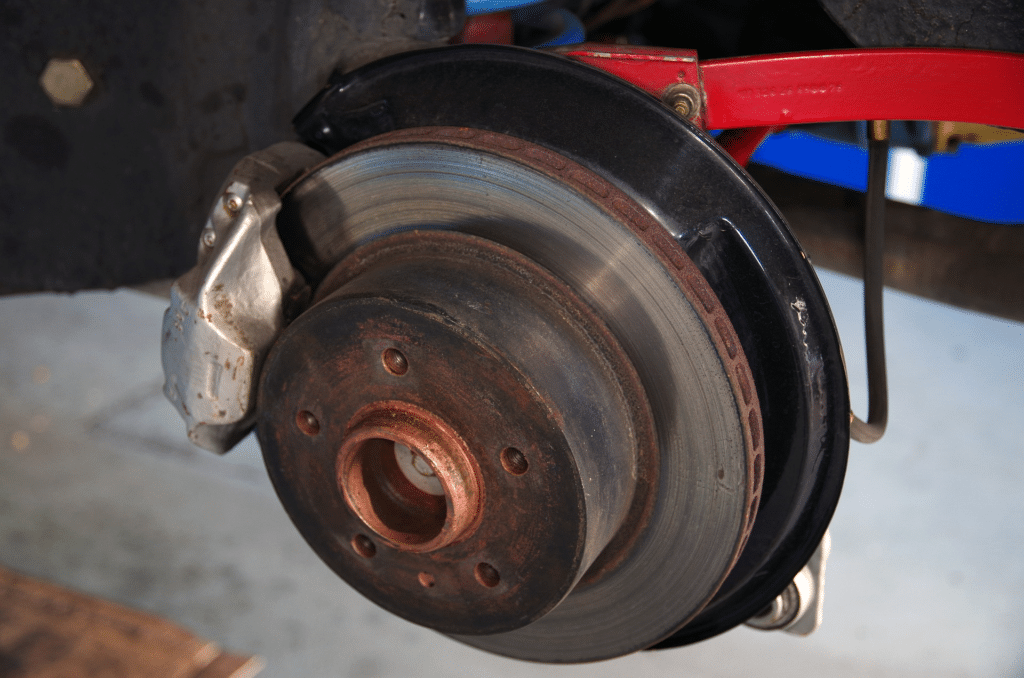
Image by Michael Kauer from Pixabay
All vehicle brakes wear over time. But premature wear on brakes, as well as uneven wear on brakes, can cause accidents or damage to other car parts.
Let’s take a look at what causes excessive wear on brakes or unusual wear patterns so you can avoid situations that put you or your vehicle in jeopardy.
Signs of Unusual Brake Wear
How do you know if your brakes are wearing unevenly or perhaps faster than expected? Look for these signs that there is something not right with your brakes:
- Squeaking or grinding noises when braking, especially from one tire or one side of the vehicle
- Brakes not slowing or stopping the car adequately (need to apply more pressure than normal to stop)
- Brakes feel “spongy” or you have to pump the brakes to stop (alternatively, they may feel too stiff)
- Tires wearing unevenly (treads worn down on one tire, one side of the vehicle, or one side of an individual tire)
- Vehicle feeling “sticky” when starting from a stop, often as if one side or end of the vehicle has more friction
- Car or truck shakes, shimmies, or tries to pull to one side when braking (an early sign is slight vibration)
If your mechanic puts the vehicle up on the hoist, they might notice that the tires don’t spin freely in an equal way when given a push by hand. One may feel stuck and need more force to get it spinning. Or it may not spin a much as the others.
You might get an alignment or rotate your tires, only to find the same issues cropping up again, indicating it is, indeed, a brake problem.
What Causes Wear on Brakes?
There are multiple factors that can cause wear on your brakes that goes beyond the normal level accumulated by regular driving.
Misalignment
While taking your vehicle in for a wheel alignment doesn’t always fix unusual brake problems, sometimes misalignment actually is the cause of uneven wear. If you suspected your car or pickup was already out of alignment before you started noticing brake concerns, this may well be the culprit. Also, if it’s been a long time since an alignment, this cause is worth considering.
Poor brake line maintenance
Air bubbles can build up in your brake lines, reducing the effectiveness of the brake fluid there, which lubricates your brake system. Your mechanic should flush your brake lines about once every two years — more often if you put a lot of miles on your vehicle, especially in stop-and-go traffic.
Slide pin corrosion
Slide pins connect your brakes and your wheels. If they become corroded, they can prevent smooth movement of the brake calipers, which house the brake pads and pistons and help bring your vehicle to a proper store. Rust and road salt can cause slide pin corrosion, which can be fixed if it hasn’t progressed too far.
Jammed caliper
Dirty or rusty pistons can make brake calipers sticky. If the caliper becomes jammed, the brake pads can become stuck to the rotors, and they erode much more quickly than expected. Sometimes calipers can be cleaned and rebuilt, although in other cases, the best solution is to simply replace them.
Uneven brake rotors
Multiple factors contribute to uneven wearing of brake rotors, including:
- Sticky calipers (as described above)
- Slamming on the brakes when driving
- Accumulation of rust
- Debris stuck between the pad and rotor
When the brake rotors aren’t uniform — known as disc thickness variation or DTV — your brake pads can wear down unevenly too.
How to Reduce Wear on Brakes
You can reduce the likelihood of wear on your vehicle’s brakes, including uneven or excessive wear, by following these best practices:
- Give yourself plenty of room to stop slowly so you can avoid hitting the brakes hard. Teach young drivers in the household to do this as well.
- Avoid stop-and-go traffic whenever possible.
- Give your vehicle a regular wash, including around the wheels, to remove debris and sea salt that’s present in coastal areas of British Columbia.
- Stay current on vehicle alignment, and bring the vehicle in if it starts pulling to one side.
- Make sure you see your mechanic for scheduled maintenance regularly, such as brake line flushing and evaluating brake function.
- Check in with your mechanic right away if you notice any of the signs of abnormal brake wear listed above.
